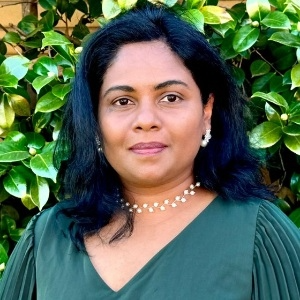Title : Unveiling the unforeseen: Unusual presentation of acute motor and sensory axonal polyneuropathy in a regional Victorian Hospital
Abstract:
Background: Guillain Barre syndrome (GBS) is a very well-studied condition in neurology which usually associated with antecedent infections, predominantly gastroenteritis or chest infection over the past few weeks. Among its variants, acute motor and sensory axonal neuropathy (AMSAN) is the severe form and has got worse clinical course and prognosis. Campylobacter jejuni is the agent in 70%of cases of acute motor and sensory axonal neuropathy (AMSAN) cases. There are cases of GBS concomitantly with the infections.
Case Presentation: A 68-year-old male presented to the emergency department with four-day history of severe right sided pleuritic chest pain, which was unbearable, not responding to conventional analgesics. He also experienced difficulty in walking over the last two days. He started using a stick which is new and wife witnessed furniture walking before the day of admission. On examination, noticed a well-built man with marked distal weakness of the lower limbs (3/5) with global areflexia. Upper limb power was normal (5/5) both distally and proximally and no objective sensory loss demonstrated. Cranial nerves were spared. Chest examination did not have any positive findings. Cerebrospinal fluid (CSF) examination did not reveal the typical albumin cytological dissociation (protein 0.37g/l, leuk-1*106) and the CT brain and MRI spine were also normal. Blood panel was pristine and chest X-ray was devoid of any consolidation. On the first day of admission, his pleuritic chest pain was causing him distress which required intravenous opioids while closely monitored for neurological progression given the atypical features. His weakness progressed proximally in the next 24 hours, power was 2/5 in the distal feet and 3/5 proximally, upper limbs also started with the distal weakness of 4/5.Then intravenous immunoglobulin was commenced (0.4g/kg/d for 5 days). However, the weakness progressed to affect the respiratory muscles which led him to get intubated. He also had autonomic instability with fluctuations in the blood pressure and tachycardia. The repeat CSF on day 9 revealed albumin cytological dissociation (CSF protein 0.92g/l) and nerve conduction also confirmed highly attenuated tibial motor amplitude with prolonged distal latencies and slow velocities, absent F waves, normal median motor CMAP which favours generalized axonal motor and sensory neuropathy. CSF anti GM1, GAD antibodies were negative. The serologies from extended viral and bacterial respiratory panel to evaluate the underlying aetiology was negative including COVID PCR. There is no recent vaccination as well. Th weakness started to improve after four weeks into the illness. Eventually it improved and patient is undergoing rehabilitation at present.
Conclusion: Diagnosis of GBS could be challenging at times especially in a regional setting with limited resources. It should be driven by high clinical suspicion even when the timeframe is quite short. Contrary to the typical cases of GBS, the weakness could start concomitantly with an infection or as short as within 48 hours and reach nadir in 3 days. The absent albuminocytological dissociation in the beginning of the course should not exclude the clinical suspicion and it should be repeated after a week. This case underscores the importance of recognizing atypical presentations of GBS, especially when neurological symptoms manifest in conjunction with unusual clinical features, thereby emphasizing the importance of the clinical diagnostic approach and timely intervention to optimize patient outcomes.




